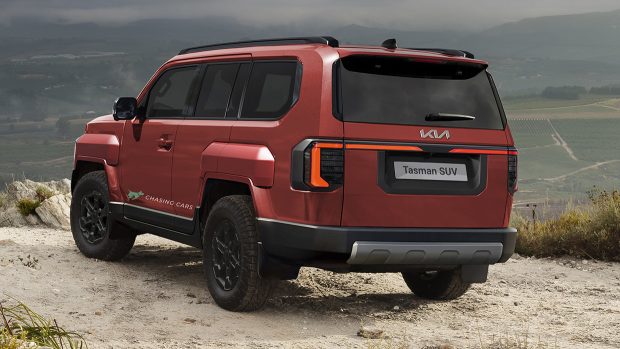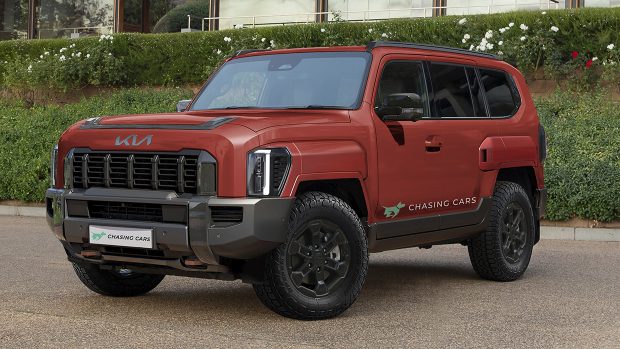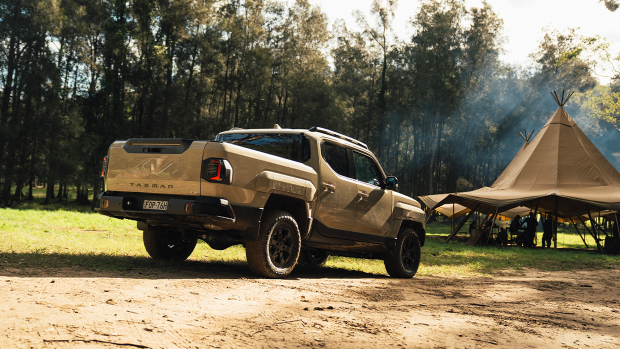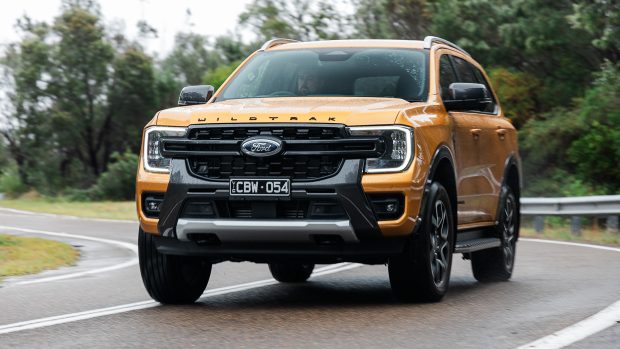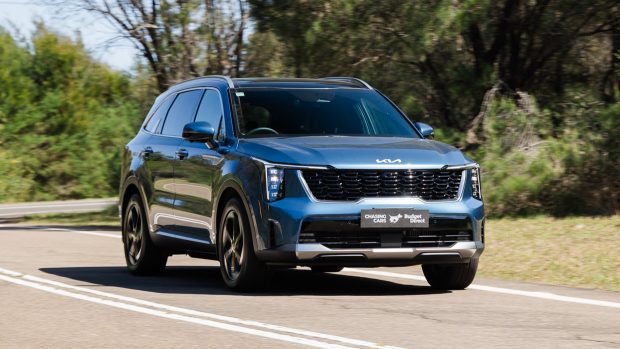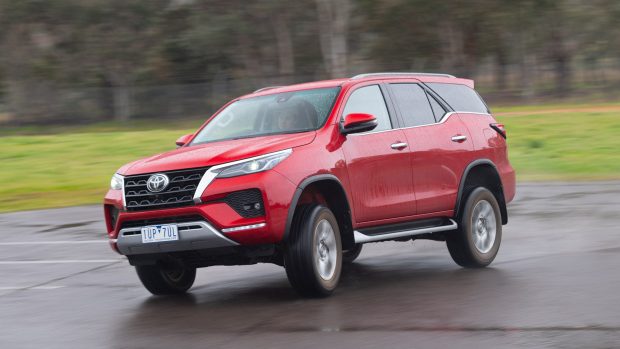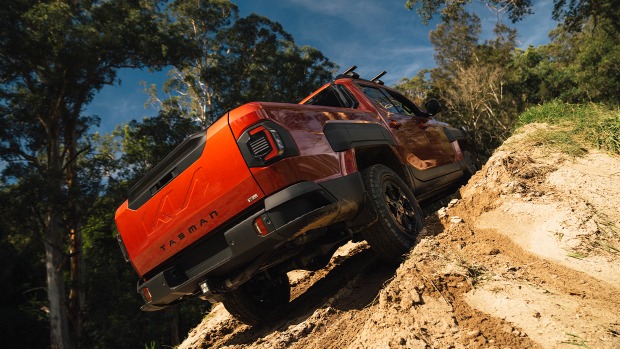-
Car Reviews
- All reviews
- Midsize SUVs
- Small cars
- Utes
- Small SUVs
- Large SUVs
- Large cars
- Sports SUVs
- Sports cars
- Vans
Latest reviews
- Car News
-
Car Comparisons
Latest comparisons
- Chasing Deals
With its first ever ute to launch imminently, Kia will be looking at how to amortise costs over a broader range
The Kia Tasman was one of the worst kept secrets in the automotive world, and Kia is finally on the cusp of officially launching its first ever ute.
First, the company’s first ute needs to succeed at launch. Then, development costs need to be justified. This usually means more variants to spread the load. Cab chassis and single cab Tasmans will be the start.
But what better to amortise costs than with a Toyota LandCruiser Prado, Ford Everest and Isuzu MU-X rivalling Kia ‘Tasman’ SUV?
In collaboration with digital artist Theottle, we have secured exclusive renders showing what an Australian-delivered version – with Tasman’s body-colour wheelarches – would look like.
‘Our’ Tasman SUV render stays faithful to the ute at the front, with the same controversial headlights that flow into the now-painted fenders.
It’s down the side where things get interesting, with the ‘Tasman’ SUV neatly integrating the rear door and handle into that distinctive rear fender flare.
For the rear, the Tasman SUV really steps out with a long, top-hinged tailgate and rear bumper garnish. The roof rails also extend all the way to the back, where a small roof spoiler aids aerodynamics.
Finally, the tail lights are very different. Instead of being small pods on the flanks, the larger elements are joined by a strip of LED lighting broken in the centre, with the Kia logo above.
The ute is one thing, but with high development costs and a ute landscape being fast disrupted by new Chinese entrants such as the BYD Shark 6 and GWM Cannon Alpha, Kia is likely to need to diversify its ladderframe offerings if it’s to succeed.
The easiest way to do that is take an existing pick-up, add a wagon-body on the back, a third row of seats, suspension that’s a bit more compliant, and, hey presto, you have something like the Everest, MU-X and Mitsubishi Pajero Sport.
It isn’t quite that simple – there’s a host of reengineering work, tuning, compliance, safety, and other hoops to jump through. But it’s not an untrodden path — with the locally engineered, Ranger-based Everest the most notable example.
Compared to seven-seat family SUVs like the Kia Sorento, the ute-based SUV is a popular choice. Buyers love the stout ladderframe construction that generally offers improved towing and off-road ability, even if it can come at the expense of cabin practicality and comfort.
Kia has sold just over 5000 Sorentos this year, while Ford has shifted more than 12,000 Everests, and Isuzu nearly 8000 units of MU-X.
Of the mainstream large SUV segment, ladderframe entrants have made up the majority of sales this year at 64 percent.
There is also a potential benefit under the New Vehicle Efficiency Standard (NVES), wherein body-on-frame 4×4 vehicles like a potential Tasman SUV are held to a more lenient standard than monocoque models, such as the diesel Sorento.
Kia and related brand Hyundai are already planning to amortise ute development costs, with newly appointed Hyundai Motor Company Australia chief executive Don Romano telling Chasing Cars that model will come with Tasman’s ladderframe and hybrid power.
Still, rough-and-tumble SUVs are a popular choice in Australia. And there lies one problem – where else are these vehicles popular?
Not in emissions-mandated Europe or tariffed USA, but South East Asia. It’s the birthplace of Fortuner, MU-X and Pajero Sport.
As well as in Australia, Kia will need to decide if the business case is right globally before jumping in.
The obvious answer is the ute’s sole single-turbo diesel four-cylinder, producing 154kW and 440Nm.
In ute-based SUV world, that’s not too far off the mark for more affordable models, however the impressive Ford Everest sports an overtaking-friendly 184kW/600Nm 3.0-litre turbo-diesel V6.
While it was thought future Tasmans may score a high-output V6, Chasing Cars understands that plugless or plug-in hybrid power is more likely – at least for the bulk of the Tasman range.
Regardless, to keep up with the rest of the market a Tasman SUV would need an automatic transmission, full-time 4×4 with a low-range transfer case, the option of a locking rear differential, and 3.5-tonne towing capacity.
Kia Australia was not forthcoming when asked whether an SUV version of the Tasman is due. The model makes plenty of sense, though.
Chasing Cars understands that a Tasman SUV is not in the immediate product plan for Kia – so expect at least 18 months, if not twice that, before seeing such a vehicle. That would put us in 2027 or 2028.
In the meantime, Kia will officially launch Tasman in high-spec dual-cab trims to media, dealers and customers later this month.
Initial tubbed versions will be followed by dual-cab chassis versions in August, then fleet-oriented single cab chassis versions will become available in late 2025.
Prices listed are national driveaway
Latest news
About Chasing cars
Chasing Cars reviews are 100% independent.
Because we are powered by Budget Direct Insurance, we don’t receive advertising or sales revenue from car manufacturers.
We’re truly independent – giving you Australia’s best car reviews.
